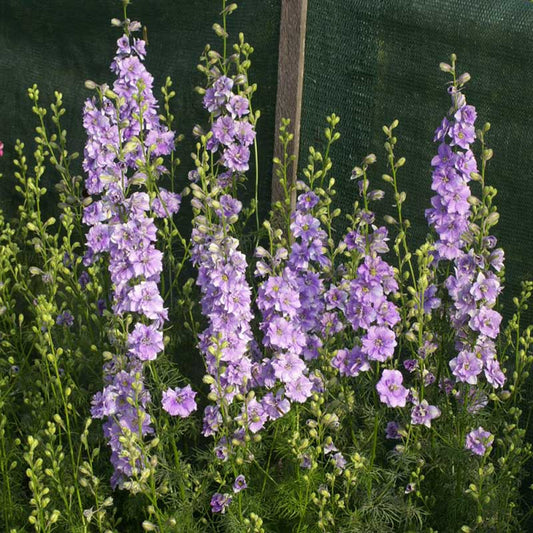-
main-collection-product-grid

Larkspur Seeds - Frosted Skies
Flowers hold their color when driedLarkspur Seeds - Frosted Skies
Flowers hold their color when driedRegular price $5.99Regular priceUnit price per -
main-collection-product-grid

Larkspur Seeds - Fancy Smokey Eyes
Cold-tolerant hardy annual thrives in cooler climatesLarkspur Seeds - Fancy Smokey Eyes
Cold-tolerant hardy annual thrives in cooler climatesRegular price $5.99Regular priceUnit price per -
main-collection-product-grid

Larkspur Seeds - Fancy Purple Picotee
Cold tolerant hardy annual that blooms in late summer and fallLarkspur Seeds - Fancy Purple Picotee
Cold tolerant hardy annual that blooms in late summer and fallRegular price $5.99Regular priceUnit price per -
main-collection-product-grid

Larkspur Seeds - QIS Light Blue
Flowers may be used in dried bouquetsOut of StockLarkspur Seeds - QIS Light Blue
Flowers may be used in dried bouquetsRegular price $5.99Regular priceUnit price per
About our delphinium seeds
- 20 delphinium seed varieties
- Provides an excellent spread of color
- Superb choice for cut flowers and dried flower arrangements
- Prefers full sun exposure
The top benefits of delphinium
Believe it or not, the delphinium name was actually inspired by sea creatures! It derives from an Ancient Greek word meaning "dolphin." It is said that this name was inspired by the shape of flowers, as they curve toward the sky. Various color choices are available, including purple, pink, and bright white. These tall wonders make excellent border plantings, as well as cut flowers. Imagine them reaching up high in the back of a vase with other smaller accents in front. Many gardeners like to dry them for dried flower arrangements as well. However you choose to display them, delphiniums are an absolutely incredible showcase of Mother Nature's splendor.
An annual plant, delphinium (also called larkspur) has become quite popular through the years for those seeking a "cottage garden" look in their yards. The leaves are deeply lobed, with the main flowering system growing erect and up to two meters tall in large meadowland species. Delphinium flowers are symmetrical and contain many stamens. In the majority of species, petallike sepals grow together to form hollow pockets that contain spurs at the end. Thus, the name larkspur.
The Best time and place to plant delphinium
Plant delphinium in the fall or spring, early in the season. Look for an area that receives full sun to partial shade, and with average soil. Being as delphinium does not like to be transplanted, it is best to direct sow the seeds in to the garden once all danger of frost has passed. Space the seeds four inches apart and then lightly cover the seeds with 1/8th an inch of soil. After germination, thin the seedlings to 10 to 12 inches apart. Ensure the soil is moist to increase delphinium's growth.
Caring for delphinium plants
During dry periods, water delphinium once or twice a week. Use a general purpose fertilizer once a month until after the flowers have bloomed. If the stalks begin to bend due to their weigh, staking can be employed. Delphinium are highly vulnerable to frost, mildew, and fungal disease, Be sure to monitor your plants and protect them from the aforementioned problems.
Delphinium is considered to be toxic to humans and animals, most notably cattle. Exercise caution when handling and growing.
For more information about planting, growing, and caring for delphinium seeds, see the Delphinium Seeds Planting Guide.



